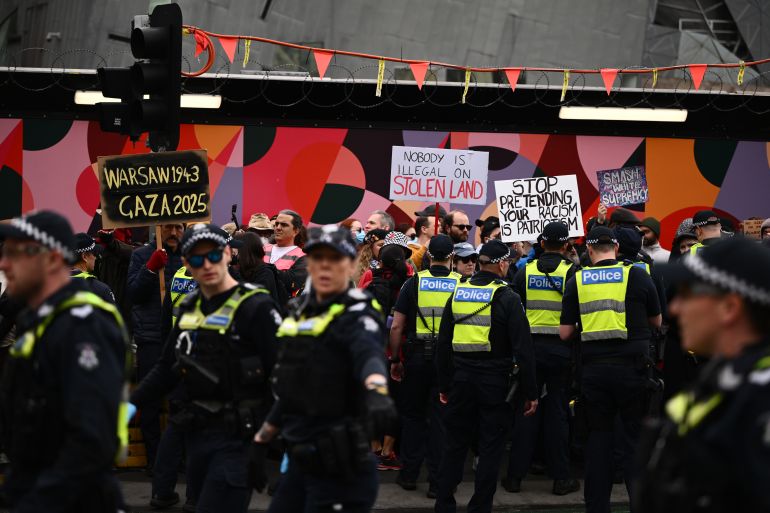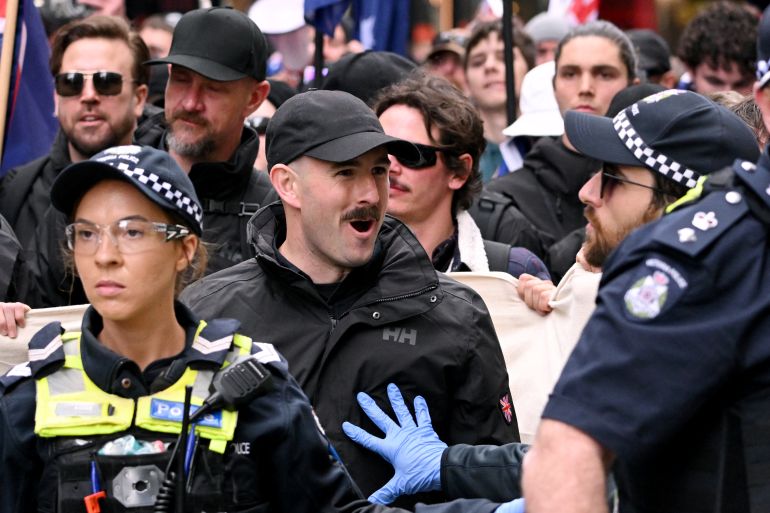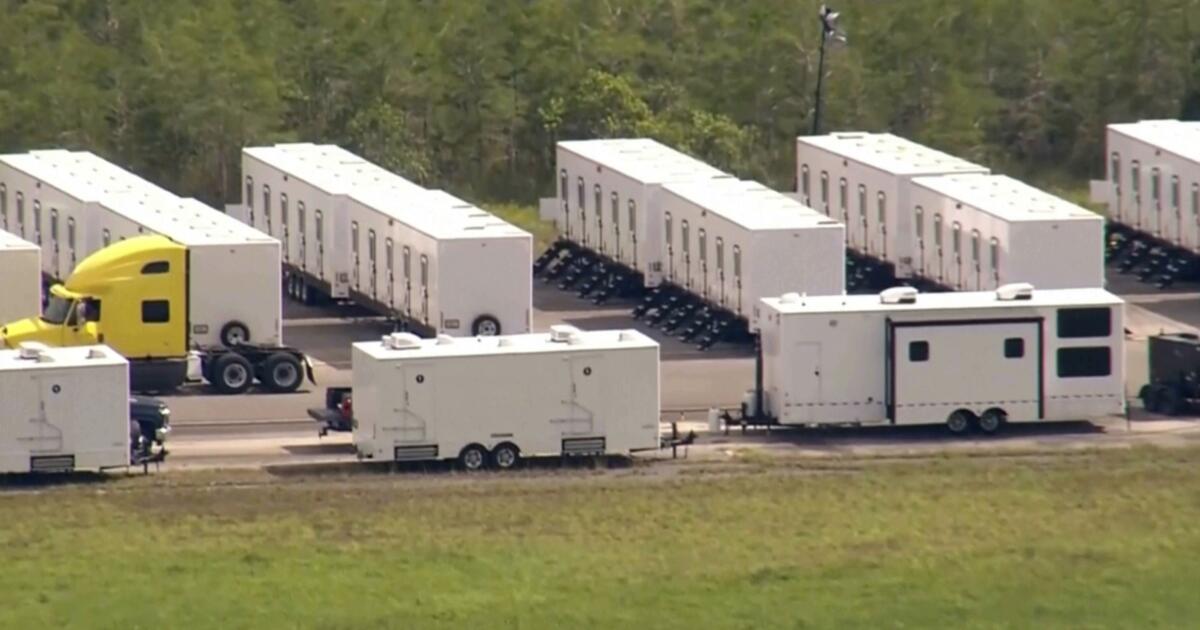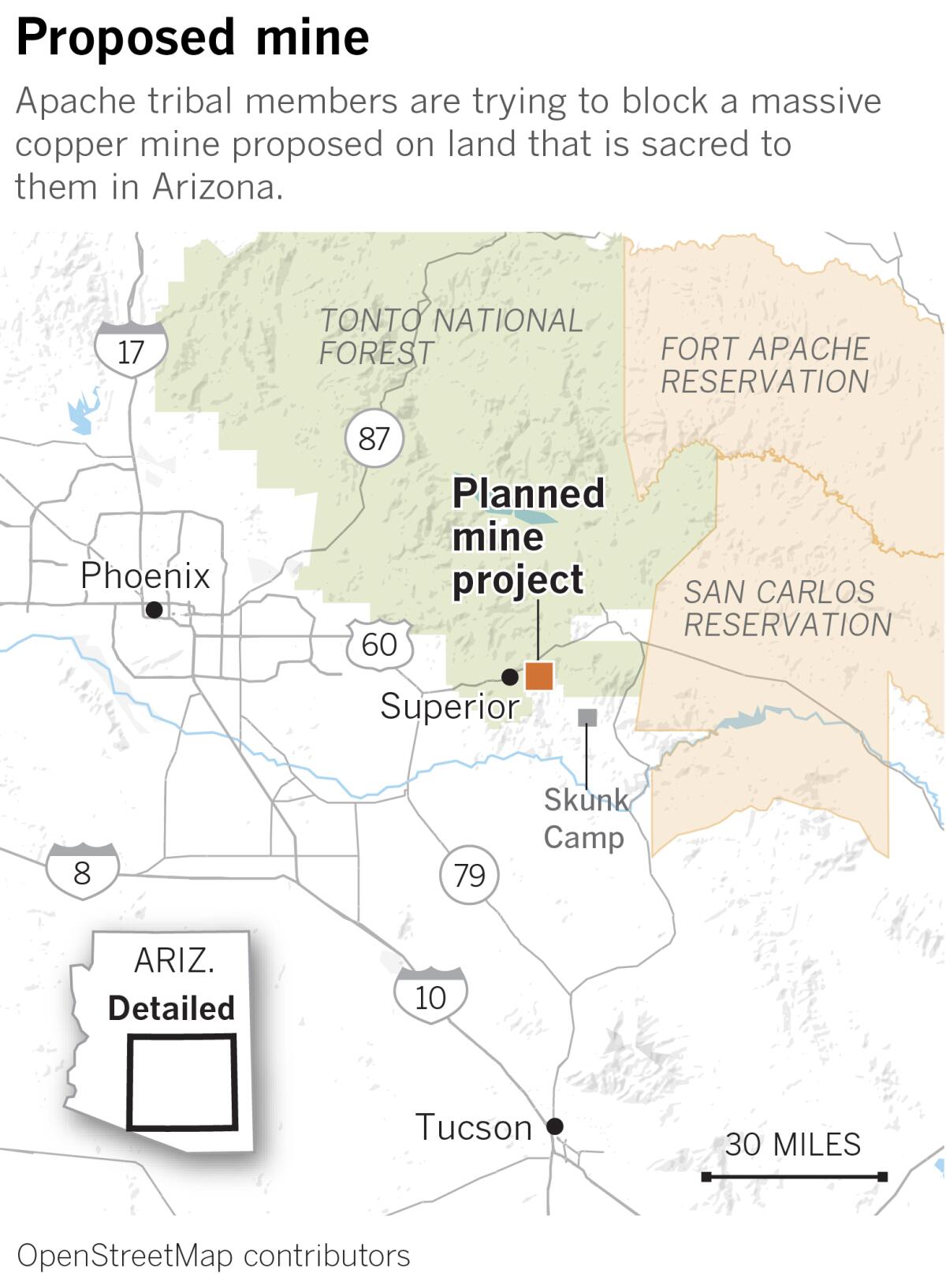Australian neo-Nazi attack on sacred Indigenous site a worrying trend | Racism News
Melbourne, Australia – A far-right “anti-immigration” march escalated into a violent attack on a sacred Indigenous site in Melbourne last weekend, raising serious questions about police conduct and institutional responses to neo-Nazi groups in Australia.
The march on Sunday, which saw members of the self-described neo-Nazi National Socialist Network (NSN) lead chants of “Australia for the white man”, culminated in a group of 50 men storming Camp Sovereignty – the site of a historic Aboriginal burial ground in the city.
Recommended Stories
list of 4 itemsend of list
The attack left four people injured, with two hospitalised for severe head wounds.
The “March for Australia” protest against mass immigration came just one week after more than 350,000 people marched across Australia in solidarity with Palestinians amid Israel’s war on Gaza.
Far-right and neo-Nazi connections were evident in the organisation of the march.
According to the Australian Broadcasting Corporation (ABC), prominent far-right figure Hugo Lennon, an associate of the neo-Nazi NSN, was listed as an original organiser before being quietly removed from the event’s Facebook page days prior.
In a statement released a day before the march, Thomas Sewell, leader of the NSN, declared, “March for Australia is about stopping immigration. No illegal actions or gestures will be performed by our members on the day.”
For some, the ensuing violence at Camp Sovereignty made clear the event’s underlying intentions.
“The rally was never about immigration but an excuse to parade white supremacist ideas in Australia,” said Ilo Diaz from the Centre Against Racial Profiling.
‘We knew they were coming back’: The assault on Camp Sovereignty
The Camp Sovereignty protest site occupies the “Kings Domain” parkland area in central Melbourne.
The camp is considered a sovereign embassy of Australia’s First Nation people and a sacred space dedicated to honouring Indigenous ancestors and healing generational trauma within the Aboriginal and Torres Strait Islander community, particularly the Boonwurrung and Wurundjeri people of the Kulin Nation.
Established in 2006 by elders Robbie and Marg Thorpe, Camp Sovereignty marks the site of an Indigenous ceremonial place and burial ground, and has come to symbolise ongoing Indigenous resistance in Australia, advocating for an end to genocide and recognition of Indigenous sovereignty and land rights.
Nathalie Farah, who said she was kicked in the stomach during the attack on the camp, said the threat from the far right was evident hours before the violence took place.
“Earlier that morning, Tom [Sewell] and a couple of his mates walked through Camp Sovereignty,” Farah told Al Jazeera.
“They wanted to walk through the sacred fire. We knew that they were going to come back. The police knew they were coming back,” Farah said.
At approximately 5pm local time, a large group, led by Sewell, armed with poles and pipes, charged the camp.

Video footage shared on social media showed the attackers, most dressed entirely in black, charging towards the camp and assaulting anyone in their path as they tore down First Nation flags and inflicted damage to the site.
The Black Peoples Union, an Indigenous political organisation, said the attackers chanted “white power” and racial slurs while stamping on the camp’s sacred fire – which is kept burning to honour the Indigenous ancestors buried at the site – and trampling on the Aboriginal flag.
Video clips of the attack showed the men and younger youths specifically targeting women at the camp.
“I had what looked like a 15-year-old boy rip my hair, throw me to the ground and smash into my face with his fists. He did it with a smile on his face,” a 30-year-old teacher said in a witness statement to the Black Peoples Union.
Naarm Frontline Medics, a volunteer medical group, alleged police arrived at the camp only after the attackers fled, and claimed officers “came with pepper spray drawn on the victims of the assault, not the attackers”.
The medics also accused officers of having “actively obstructed the victims ‘ access to emergency medical care”.
Victoria Police confirmed they made no arrests at the site.
A ‘globally networked’ threat
Researchers note the attack on Camp Sovereignty was not an isolated incident but part of a growing, internationally connected, far-right threat.
The White Rose Society, which monitors far-right extremism, told Al Jazeera the neo-Nazi NSN group is “heavily networked with the international far right” through groups such as Terrorgram and 764/COM, with leaders “playing a prominent role in the international active club network”.
“Australian fascists and neo-Nazis have extensive reach on social media to an international audience, contributing to neo-Nazi news sites that promote anti-Semitic content,” the group said.
The NSN did not respond to Al Jazeera’s requests for comment.

The group’s Telegram channel displays multiple videos showing members training in combat techniques and chanting “white men fight back”, content that is also promoted across their TikTok accounts and official website.
The camp attack has highlighted concerns among some regarding the selective condemnation of far-right violence from official institutions in Australia.
Australia’s special envoy to combat anti-Semitism, Jillian Segal, who was appointed to lead efforts against anti-Semitic actions in Australia, has yet to issue a statement addressing the neo-Nazi violence.
Segal also declined to address the role of neo-Nazis in the “March for Australia” protest, telling reporters at a conference: “I don’t want to comment on any particular incidents as I think this goes beyond any particular incident.”
In July, Segal said she had no involvement in a major donation by a company co-directed by her husband to Advance Australia – a conservative lobby group that rails against immigration, pro-Palestinian protests, and the Labor government of Prime Minister Anthony Albanese.
Aboriginal Senator Lidia Thorpe, a Djab Wurrung, Gunnai and Gunditjmara woman, condemned what she called institutional hypocrisy in dealing with the far-right in Australia.
“Why are the authorities allowing this to happen? Why is the prime minister allowing this to happen?” Senator Thorpe said.
Thorpe has demanded a full investigation into the attack on Camp Sovereignty and has directly linked the slow police response to systemic racism in Australian society.
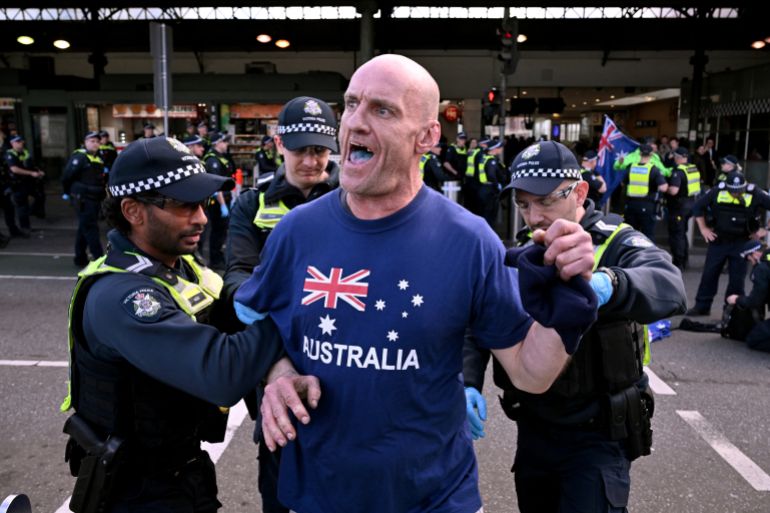
“We see how the Victorian Police treat Aboriginal people every day on the streets. There needs to be a full investigation on the infiltration of the neo-Nazi movement into not only the Victorian police force, but every so-called police force in this country,” Thorpe said.
“I’m sure there’s a lot more members of the NSN that wear badges amongst the police force,” she added.
The March for Australia rally proceeded with a significant police presence last weekend. Videos and witness accounts show police officers walking alongside the demonstrators.
When counter-protesters attempted to block NSN members from joining the main rally, video footage shared by the NSN and anti-fascist organisers showed police using pepper spray, but only on counter-protesters.
Political commentator Tom Tanuki said this selectivity fitted a pattern of police conduct that “invariably” sides with the far right.
“I wasn’t surprised to see them, as depicted in my video, defending NSN’s entry into the rally and pepper-spraying people out of the way,” Tanuki said.
A statement released before the march by Victoria Police declared, “Anyone thinking of coming into the city to cause trouble, display hateful behaviour, breach the peace or confront others will be met with a strong police response.”
A measure of accountability
More than 48 hours after the attack on Camp Sovereignty, NSN leader Sewell was arrested and charged. On Friday, he was denied bail by a court in Melbourne. Five other NSN members were arrested and released on bail.
Despite the arrests, authorities have not classified the attack on Camp Sovereignty as a racially motivated hate crime, which has prompted condemnation from Aboriginal leaders.
Speaking to Al Jazeera, Senator Thorpe stated unequivocally: “Camp Sovereignty is our place of worship. For the authorities, even the federal parliament and the prime minister, not to see this as a hate crime, to refuse to name it and treat it as one, shows we have a serious problem in this country.
“It’s racism in itself not to call it what it is,” Thorpe said.
Thorpe connected the violence to Australia’s colonial legacy.
“The war has not ended for our people,” she added.
“We have over 600 Aboriginal deaths in custody with no one held accountable. 24,000 of our children have been taken from their mothers’ arms. They’re locking up our babies from age 10; 93 percent of the child prison population are our children. The genocide continues.”
Despite the attack, Camp Sovereignty remains, and a nationwide day of action has been called by Aboriginal resistance organisation The Blak Caucus on September 13, to show solidarity with the camp.
